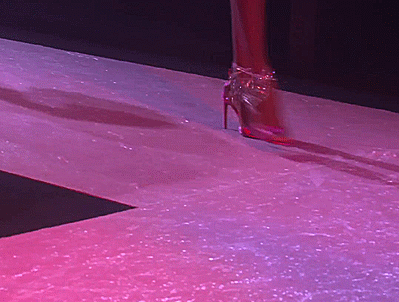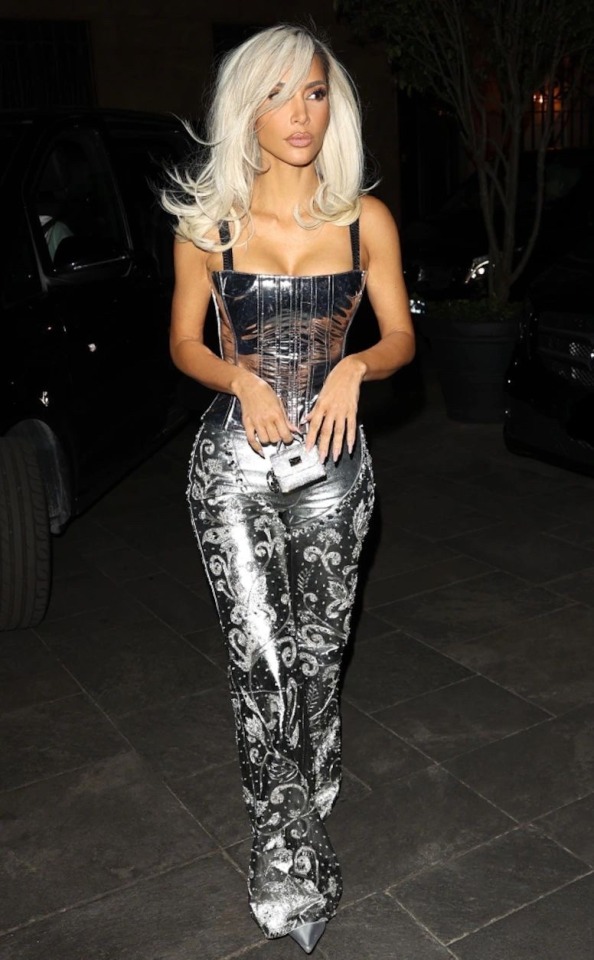#Armenian model
Text
Top 10 Most Beautiful & Hottest Armenian Women
Top 10 Most Beautiful & Hottest Armenian Women
Your seek for essentially the most stunning & hottest girls in Armenia ends right here. See this checklist of the highest 10 most stunning & hottest Armenian girls.
Armenia is greatest well-known for its enticing geography, delicacies, tradition, and historical past. It’s an attractive nation encircled by stunning and sizzling girls. Armenian magnificence won’t ever disappoint you. They typically…

View On WordPress
1 note
·
View note
Text


@beckydenimjean
#kim kardashian#style#beauty#fashion#models#ultimate beauties#beautiful#keeping up with the kardashians#the kardashians#armenian#skims
11 notes
·
View notes
Text


uhhh idk... if you squint your eyes a little?????
#i am. i truly am sorry but carlo still has armenian swag to me. his game model looks like my fkin grandpa 😭🙄#give this man some more southern swag. if not for him then for me
5 notes
·
View notes
Text

Cherries + Sunshine 🍒
#artistic photography#photooftheday#photographers on tumblr#vintage aesthetic#vintage fashion#cherry#summer#retro photography#adult model#armenian#artists on tumblr#lovers#80s aesthetic#candy#Spotify
5 notes
·
View notes
Text


Skye Jones - Saudi Armenian British, Unknown
#face claims central#female face claims#face claims#fancast#fan cast#middle eastern models#middle eastern#asian models#armenian models#poc female models#character inspiration#wattpad#beautiful girls#models#arab models#saudi models
2 notes
·
View notes
Text
I remember people trying to explain why the tangled mother gothel wasn’t antisemitic or problematic because she’s officially modeled after an Armenian woman like ok sir you see why this is still bad right. Why the kinky haired olived skinned west Asian woman kidnapping a white blonde German baby for her special magic is like. Still bad. It’s still bad
119 notes
·
View notes
Text





the armenian cathedral of the assumption of mary in lviv, ukraine. it was built in the late 14th century by an armenian merchant who modeled it on the cathedral of ani, the seat of the armenian catholicos from the mid 10th-11th centuries. armenians have maintained a consistent presence in ukraine and eastern europe in general since at least medieval times.
#ukraine#armenia#architecture#interior#worship#christian#my posts#probably just gonna post less often and consider myself not on a break#or still be on break#who knows lol#also yes i picked that pic because it had the :) and <3 tagged on the building#say what u want about graffiti but i think thats an appropriate thing to tag on a church
191 notes
·
View notes
Text

Stephan Aghajanian (Armenian, 1863-1940), Model. oil on canvas
135 notes
·
View notes
Text
Doing some research
I came across CAIR's official statement on the Armenian Genocide-
"On the 100th anniversary of these tragic events, in which some 1.5 million people died as a result of intentional killings, systematic abuse, forced migration, or starvation, we express our solidarity with the Armenian people whose family members and loved ones suffered such horrific atrocities and injustices at the hands of the military coup government of the collapsing Ottoman Empire.
"We also call for a process of reconciliation between the Turkish and Armenian people -- two honorable nations -- that would truthfully address historic injustices against the Armenian population in the Ottoman state and serve as a model for all those who struggle today for freedom, justice and human rights."
Is it me, or did CAIR just "both sides" the Armenian genocide while attributing blame to a nameless "military coup government?"
(For clarity- the Young Turks, along with many Muslim Turkish and Kurdish civilians, committed the Armenian Genocide following a declaration of Jihad against non-muslims in the Ottoman Empire. )
21 notes
·
View notes
Text










Virgo, Venus style
Have a style that is noticeable in some ways, subtle, but then you have people like Kim Kardashian, where you have to add the Sun and rising into this position of these people who ever Virgo Venus is going to be Scorpios. The other side and libra is also Sagittarians and Virgos and Leos,.
Blake, lively, I believe is right, is one of my best styled on the carpet, but I wanted to go away from the carpet in the stylus and go to streetwear and home because a lot of these placements are models and actresses et cetera so Bridget Baldo, Sophia Loren and Bella Hadid give perfect Virgo Venus, where it is very classy Not too eccentric attention to detail is definitely a vital trait anyway, but I believe these women all have prominent Virgo in the chart and then you get like Kim and Kylie who are both Leo and Libra sons with water moons so there’s definitely like a spectrum when it comes to this Venus signbecause as we know the Kardashians, like to blackfish and other peoples races, yes Kim is a Armenian, but Kylie is not and the funny thing is Kylie looks more like Kim and in the show Kim was getting influenced by Kylie when she was dying to feel older.
The dresses are definitely giving Virgo on the red carpet attention to detail the shades stuff at the expense you know how to save the right things to get what you like they often love to shop less being nitpicky and tidy all the time they will have an area of their life. That is a complete mess.
Kayson point, Kanye West came into Kim‘s life and he changed the whole wardrobe. This is when he was still in his dark twisted fantasy phase and was wearing like the dark coats dark clothes, but not too over the top how he is now did have a thing of clothes and making a team like I said used to do it and he left both had his moons and prince was also a Gemini with a water rising, so I will post a separate post of that error of them and the king, Kylie era so people are definitely influenced by Virgo Venus, but taking consideration and mix up your style a bit with your rising sign with it and also your sun sign.
Like I said with Bella Hadid, her address is on the catwalk and on her day-to-day life is very viral energy. It’s not too subtle and it’s not too over the top it’s perfect and it’s good quality good quality network, good quality jeans, but also fine with labour son, and then we have Blake lively. Who’s got many Virgo planets in her chart and she puts it all together with Leo rising should be a showstopper.
#astro observations#astro community#astro placements#astrology observations#astrology#astro notes#astroblr#virgo venus#virgo sun#virgo#virgo rising
41 notes
·
View notes
Text
Q: do you have a special relationship to your tarot deck?
Yes, when I am able to I try to incorporate as much of whatever is interesting to me at the moment in with the design. For example, the word for witch in Armenian is kakhard (կախարդ) and the name of the pre-Christian Armenian goddess of the sea is Tzovinar (Ծովինար) (who strangely enough is said to appear as a pillar of flame, which would make getting wet a bit of a problem, I suppose).
So here you have a kakhard in the service of Tzovinar. I tried to model the symbolism on the Rider-Waite deck but I know I took some liberties here and there. I’ve yet to come up with the suits but a Major Arcana isn’t too shabby.
Note.
For the record, these are all AI-generated digital paintings. I would love to be able to claim that I was such an amazing artist that I cranked them all out one sunny Tuesday morning but that would be a horrible lie.






















16 notes
·
View notes
Text
This article was published in 2005. It is scarily relevant and if certain excerpts had been taken and presented to me as a description of what is happening today, I would believe it without a second thought.
"The Only Good Jew is a Dead Armenian"
The old woman was telling a tale of massacre. She had just heard of another Israeli family murdered by terrorists, and there were tears in her eyes as she remembered back those many years. "I had luck," she said in Armenian. "I hid from the Turks behind a trellis. I saw my mother and father shot down, my baby sister spitted on a scimitar."
The old woman, who'd been a young girl in the year Turkey slaughtered several million Armenians under the cover of World War One, understood the link between Armenian and Israeli corpses. Because Armenia, the first Christian state in history, whose prosperity was a reproach to Turkish squalor, and whose high culture was an insult to their ignorance, was, like Israel, an infidel island in a sea of Islam. And for that there could be no forgiveness.
The Arab complaint today against Jews, while wretchedly tired, is identical to their excuse for murdering them in their beds: failure to provide Palestinian statehood, refusal to relinquish occupied territories. For the murder of Jews to appear plausible, though, the victims must be stigmatized. Epithets like Zionist oppressors and Fascist murderers are used incessantly to browbeat hearers and achieve that purpose. This is a tactic taken straight from the Ottoman Turks of 1915.
Then, the Armenians were accused of all manner of crimes, from rebellion to robbery to kidnapping Muslim infants. Exactly how a civilized people who had peacefully existed for centuries in their ancestral lands, and whose Christian conversion predated Constantine, had suddenly become rebels, thieves, and pedophiles, was never explained. Just as in Germany of the 1930s, libel preceded genocide. The allegation of babies skewered on bayonets is a much favored emotional trigger of slanderous propaganda, which outrage upon truth and trust is more felt than believed.
Armenians did not help themselves by their passivity in the face of destruction. Says Vahakn Dadrian in his comparison of the Armenian and Jewish predicaments, "Jews and Armenians developed an ethos of submissiveness intended to mollify the agents of persecution. When the victimizers are not held accountable, that becomes a source of new incentives for victimization." In other words, radical Islam, then and now, thinks it can get away with murder.
Today, one of radical Islam's goals is to despoil the Jews of the land of Israel. In 1915, the plan of the Young Turks led by the mass murderer Enver Pasha – a model for Heinrich Himmler – was to rid Armenia of Armenians by butchering them all and resettling Muslims there. The Arabs of 2005 would be content for the Jews to pack up and leave Israel for the Diaspora. And so they kill them to drive them out. The Ottoman Turks, on the other hand, would have exterminated the entire Armenian Diaspora if their reach had been long enough, so deep was their feeling of inferiority and so rabid their hatred. As it stood, three-quarters of the Armenian population was destroyed.
The key difference between the two countries is that despite historic occupation by Romans, Seljuk and Ottoman Turks, and Bolsheviks, Armenia is today unwanted by anyone. No longer does it serve as a bridge and invasion route, since the wars of East versus West have ceased in that part of the world — at least for the foreseeable future. That war, ongoing in one way or another since Xerxes invaded Greece, is now transferred to the Middle East, Israel being correctly perceived by Islam as The West. And the land of Israel, a harsh, bony spit of desert, is lusted after by Islam as a woman who is not to be shared with another suitor.
In the long run, Israel might not be able to prevail, to continue to exist as a forward-looking, non-Muslim Western state. Unless the United States continues its massive moral and material support, beginning under Truman and continuing under the Bush Administration, sustained through every crisis, the Jewish island could eventually sink under the heavy weight of Arab populations and constant assaults — even as Israel gallantly fights a long slow defeat. Jews could neither conquer their enemies nor assimilate them, and so would be forced to return to the Diaspora from whence they came.
Before that occurred, however, there would be many acts of heroism and valor by the Israelis, and, sadly, many deaths among them. They would certainly not go gentle into that good night, but would rage, rage, against the dying of the light. Therefore it is imperative to the maintenance of freedom and peace in the world that the rabid, highly dangerous, but growing anti-Semitism in Europe and America be denounced and combated by every means and at every opportunity.
The old Armenian woman, my grandmother, having witnessed the slaughter of her people in the past and the continuing murder of Israelis in the present, had a foreboding of the future. She slowly and somberly shook her wizened head. "For Muslims today," she said, "it seems like the only good Jew is a dead Armenian."
by Christopher Baldwi
11 notes
·
View notes
Text

LEVON FLJYAN
1983, Gyumri
Boy + Girl, 2012
paper, graphite, pencil
+ the text that was accompanying the exhibition, because I find it interesting
During the European Renaissance in the 15th century, artists turned towards humanist ideas that made man into the primary subject of Western art. Reviving the philosophical tenets of Greco-Roman antiquity, the leading art schools and academies across Europe positioned the human figure as nature’s most sophisticated creation and hence, the very epitome of beauty and perfection. No longer circumscribed by religious moral codes, the naked form was transformed by artists such as Titian, Velasquez, Rembrandt and Rubens into an object of aesthetic admiration and a marker of artistic excellence.
By the 17th century the Nude had evolved into an autonomous genre of fine art, becoming a key cultural signifier of Western modernity. Armenian artists adopted these concepts relatively late, after they gained access to Russian and European art schools in the first half of the 19th century. However, while many of these pioneers excelled at academic studies of the nude figure, few of them turned to the genre itself in their professional practice. For the 19th century Armenian public, representations of nakedness were still cloaked in strict cultural bias of decency and there was little demand for such images from Armenian artists.
The fact that classicist aesthetics were defined primarily by European male artists (women were barred from studying the nude until the late 19th century) presented other challenges. Classicism created impossible standards of beauty based on racist conceptions of white man’s superiority and pseudo-scientific notions of physical perfection. Such prejudices let to the idolisation of European bodies as well as the exoticisation and denigration of other ethnicities in Western art. This situation hindered the expression of specifically local, Armenian sensibilities in regards to nudity in visual art well into 20th century.
Though the rise of modernist art in the 1900s destabilised classical models of figurative representation, the Renaissance-inspired “flawless” nude has remained remarkably pervasive. Reappearing time and again in both European and Armenian art as a fantasy object of aesthetic admiration, the impossibly idealised body is still one of the most universally-recognized cultural constructions. Perpetuated by cinema, mass media, advertising and pornography, it continues to condition how we view ourselves and evaluate those around us.
#art#armenian#artistic nudity#this piece was a part of an exhibition about the nude figure in art from the art museum of armenia. from september 2023
16 notes
·
View notes
Text
You might be wondering why I'm writing my novel in English if it's set in Russia and my native language is Russian. Yeah, yeah, the lgbt propaganda law is a factor, but there's something else.
The fact that I tried writing it in Russian a bunch of times and it never went smoothly enough or made me satisfied the way I am satisfied with chapter 1 in English.
It might have something to do with the fact that when I tried to remember a relatable and aspirational female character in the great Russian literature, I came up empty, apart from maybe Olga in Oblomov. There are only three types of interesting female characters in Russian literature: ones who commit suicide/get murdered, ones who get married and that's it, ones who are the hero's great love, more an ideal than a person. There are no female role models in Russian literature and creating an interesting female character in Russian is a bit too challenging for a beginner writer.
I was asked once about recommendations of any female Russian writers from the 19th century. I couldn't remember any. I googled and I found a bunch of names I'd hardly heard of. And the 20th century isn't much better. There are female poets. There is an Armenian writer who wrote a cult ya book. There are some detective writers. I can't think of anyone else. I'm not a Russian literature connoisseur though, by any means.
Currently, the most mainstream music genre in Russia is shanson (I know it's technically kinda chanson, but it has very little in common with the French songs at this point). It's like country but it's mostly from the perspective of middle aged criminals, literally. It's prison songs that shape the culture. You'll hear them on TV on major channels whenever there are concerts. You'll hear them on generic radio stations. You'll hear them in taxis and buses. You'll hear your dad who introduced you to Led Zeppelin listen to them.
Women in these songs are sexual objects. They are desirable and promiscuous, they are impossible to understand and empty.
Something about all of it makes it very hard to write anything that centers a woman. Or even passes the Bechdel test (it's not a serious test, I know).
Silence has been too loud to break it.
23 notes
·
View notes
Text

“Force, not diplomacy, has decided the course of this conflict since it first flared up during the era of former Soviet president Mikhail Gorbachev. (Some would say it originated well before, in the early twentieth century.) In 1988, the Karabakhi Armenians tried to break away from Soviet Azerbaijan and join Soviet Armenia in a dispute that developed into armed conflict. In the 1990s, the Armenians prevailed on the battlefield, occupying large parts of Azerbaijani territory and driving hundreds of thousands of inhabitants from their homes. In 2020, the Azerbaijanis reversed the situation, recapturing their lost territories and taking parts of Karabakh, too.
(…)
Diplomacy resumed, with the European Union, the United States, and Russia all negotiating between Armenia and Azerbaijan. The competing mediators made progress on bilateral issues, but the Karabakh issue remained unresolved. Armenian Prime Minister Nikol Pashinyan agreed, along with the rest of the world, to recognize Azerbaijan’s territorial integrity (including Nagorny Karabakh), but the vital question of the inhabitants’ rights and security remained unresolved.
The Karabakhis’ fate was probably sealed in April, when Azerbaijan established a checkpoint on the Lachin Corridor. This de facto blockade deepened in the summer, and the situation became desperate for tens of thousands of people remaining in Karabakh (estimates range from 50,000 to 120,000) who began to run out of food and medicine.
There is a geopolitical game here. A small Russian peacekeeping force was established in Karabakh in 2020. Moscow, which has always wavered between and manipulated both sides, had presented itself as the protector of the Karabakhis. President Vladimir Putin publicly told them his peacekeepers would guarantee their safe return from Armenia and continued residence in their homeland. But the Russian soldiers stood by as the checkpoint was set up on the Lachin road earlier this year, fracturing trust held in the peacekeeping force.
The context is that after Russia invaded Ukraine, the Armenian government began to pivot toward the West, and Azerbaijan—with which Russia shares a land border and an authoritarian model of government—looked like a more valuable partner.
(…)
The military offensive on September 19 caught Western officials by surprise, which became more understandable when news broke that Russian peacekeepers simply stood down and let the assault happen. The impression that there had been a side deal between Moscow and Baku deepened when Russian officials blamed Pashinyan and his pro-Western tendencies, not Azerbaijan, for the fighting.
(…)
In the darker European order of the past decade, where normative values and a multilateral framework have been devalued, Azerbaijan cares less about statements of condemnation from Western governments. The key thing is almost certainly the support of two regional powers and neighbors: the full backing of Türkiye and deliberate equivocation from Russia, which looks more concerned about keeping its military base on the ground in Azerbaijan and humiliating the government in Yerevan than in ensuring the rights of local Karabakh Armenians.”
“Armenian separatists in Nagorno-Karabakh agreed Wednesday to disarm and discuss reintegration with Azerbaijan following a swift but deadly assault by Azerbaijani forces, a capitulation that signals the end of decades of ethnic-Armenian rule in the enclave and the rapid decline of Russian influence in the former Soviet Union territories.
The terms of the cease-fire lay groundwork that could bring to a close the autonomous rule by the population of Nagorno-Karabakh, which was won from Baku in a bloody yearslong war after the fall of the Soviet empire.
(…)
“Russia’s leverage is much weakened by what’s happening in Ukraine. We see the Armenians moving away from Russia and Azerbaijan having a relationship with Russia that is more on its own terms,” said Thomas de Waal, an expert on Nagorno-Karabakh and senior fellow at Carnegie Europe, a Brussels-based think tank.
(…)
Azerbaijan says it plans to take back the enclave—which sits inside its borders but is populated almost entirely by ethnic Armenians who have ruled since the 1990s under the terms of a peace deal brokered by Russia. Skirmishes in the years since erupted into conflict in 2020 when Azerbaijan reclaimed areas around the territory. That battle ended, again with Russian arbitration, guaranteeing Armenian separatists control over Stepanakert and supply routes from Armenia, policed by Moscow’s troops. But peace has remained shaky with Armenia’s leaders complaining that Russia is no longer able to enforce the deal, distracted by its war in Ukraine.
A senior Azeri official said Baku had advanced on the enclave while Russia’s troops and arms are tied up in Ukraine. Baku had told Russia about its intentions ahead of time, the official said, but Moscow failed to act in part because it seeks regime change in Armenia. Armenian Prime Minister Nikol Pashinyan has increasingly criticized Russia’s capabilities as a guarantor of security and worked to forge stronger links with the West.
(…)
Russia, which still has a military base inside Armenia, has seen its influence steadily wane in the South Caucasus, a territory crisscrossed by oil-and-gas pipelines where the U.S., Turkey and Iran all vie for influence. Earlier this month, U.S. forces began joint military exercises that saw 175 Armenian soldiers training for 10 days with about 85 soldiers from U.S. Army Europe and Africa Command outside the Armenian capital of Yerevan.
(…)
The Azeri offensive is the culmination of a nearly yearlong effort to cut Nagorno-Karabakh’s links to Armenia through a de facto blockade that has led to shortages in food, fuel and medicine. In recent weeks, Azerbaijan gathered its forces around Nagorno-Karabakh.
(…)
Azerbaijan’s moves to weaken the enclave violated the terms of the 2020 cease-fire clinched by Russia, and Russian peacekeepers’ inability to prevent them caused Pashinyan to repeatedly criticize Moscow’s role as a guarantor of stability while it is bogged down in its invasion of Ukraine.
The criticism has caused a chill in Russian-Armenian relations and Moscow has broadcast scenes of protesters demonstrating outside Pashinyan’s office in central Yerevan this week. Russian President Vladimir Putin said Wednesday that his country’s peacekeepers were working in the region, and Russian commentators have placed blame for Nagorno-Karabakh’s capitulation squarely on Pashinyan’s shoulders.
Analysts say that Moscow is now looking to capitalize on any weakness in Pashinyan’s government in the hopes that one of the opposition parties, which it works with more closely, could come to power as a result of rising disapproval among Armenians over the integration of Nagorno-Karabakh into Azerbaijan.”
“Officially, the 1,700-square-mile territory is part of Azerbaijan and is known by its Russian name, which translates to “mountainous Karabakh.” But to Armenians and the Armenian-majority population of the region, it’s known as the Nagorno-Karabakh Republic, a de facto independent state that has been outside of Azeri rule since 1988.
For centuries, Muslim Azerbaijanis and Christian Armenians, both of whom call the region home, clashed over who should control it. Russian rule began in 1823, and when the Russian Empire dissolved in 1918, tensions between newly independent Armenia and Azerbaijan reignited. Three years later, Communist-controlled Russia set its sights on the independent states of the Caucasus region and began incorporating them into what would become the Union of Soviet Socialist Republics.
At first, it was decided that Karabakh would be part of the Armenian Soviet Socialist Republic (S.S.R.). Though historians differ on the reasons, the initial incorporation of Karabakh into Armenia is thought to have been a plan to ensure Armenian support of Soviet rule. But the Soviets’ new Commissar of Nationalities, Joseph Stalin, reversed the decision. In 1923 Nagorno-Karabakh became an autonomous administrative region of the Azerbaijan S.S.R., even though 94 percent of its population at the time was ethnic Armenian.
(…)
As the Soviet Union disintegrated in the late 1980s, the long-dissatisfied ethnic Armenians of Nagorno-Karabakh petitioned to become part of the Republic of Armenia. Azerbaijan responded by trying to crush the separatists in 1988, and clashes intensified in the region. In 1991, both Azerbaijan and Armenia declared independence from the U.S.S.R., and the regional clashes in Nagorno-Karabakh flared into full-out war.
As a result, more than a million people became refugees, and around 30,000 people, including civilians, were killed. Both sides engaged in ethnic cleansing during the Nagorno-Karabakh War—the Azerbaijanis against ethnic Armenians, and Armenian forces against ethnic Azeris. Despite the brutal humanitarian toll, negotiations between the sides repeatedly broke down.
In 1994, the newly independent nations of Armenia and Azerbaijan signed the Bishkek Protocol, a ceasefire brokered by Russia that left Nagorno-Karabakh in Azerbaijan. But though the fighting ceased, the two sides could not agree on a peace treaty.
For the last two and a half decades, Armenian and Azerbaijani troops have been divided by a contested “line of contact” laid out in the Bishkek Protocol. It has become increasingly militarized over the years, and has been called one of the world’s three most militarized borders. The Council on Foreign Relations says that given the close positioning and limited communication between military forces stationed there, “there is a high risk that inadvertent military action could lead to an escalation in the conflict.”
That’s of even greater importance because of the conflicted nations’ powerful allies. Azerbaijan is supported by NATO member Turkey, while Russia supports Armenia, making the area a potential conflagration zone. While Nagorno-Karabakh is small, the geopolitical stakes are high due to its proximity to strategic oil and gas pipelines, and its location between the powerful regional forces of Russia, Turkey, and Iran.”
21 notes
·
View notes
Text
Through it all, Walz modeled and argued for careful instruction that treated the Holocaust as one of multiple genocides worth understanding.
“Schools are teaching about the Jewish Holocaust, but the way it is traditionally being taught is not leading to increased knowledge of the causes of genocide in all parts of the world,” Walz wrote in his thesis, submitted in 2001.
[...]
In it, Walz argues that the lessons of the “Jewish Holocaust” should be taught “in the greater context of human rights abuses,” rather than as a unique historical anomaly or as part of a larger unit on World War II. “To exclude other acts of genocide severely limited students’ ability to synthesize the lessons of the Holocaust and the ability to apply them elsewhere,” he wrote.
He then took a position that he noted was “controversial” among Holocaust scholars: that the Holocaust should not be taught as unique, but used to help students identify “clear patterns” with other historical genocides like the Armenian and Rwandan genocides.
[...]
“The Holocaust is taught too often purely as a historical event, an anomaly, a moment in time,” Walz Told the New York Times in 2008, reflecting on those Alliance lessons. “That relieves us of responsibility. Obviously, the mastermind was sociopathic, but on the scale for it to happen, there had to be a lot of people in the country who chose to go down that path.”
Tim Walz wrote a master’s thesis on Holocaust education, just as his own school’s approach drew criticism.
3 notes
·
View notes